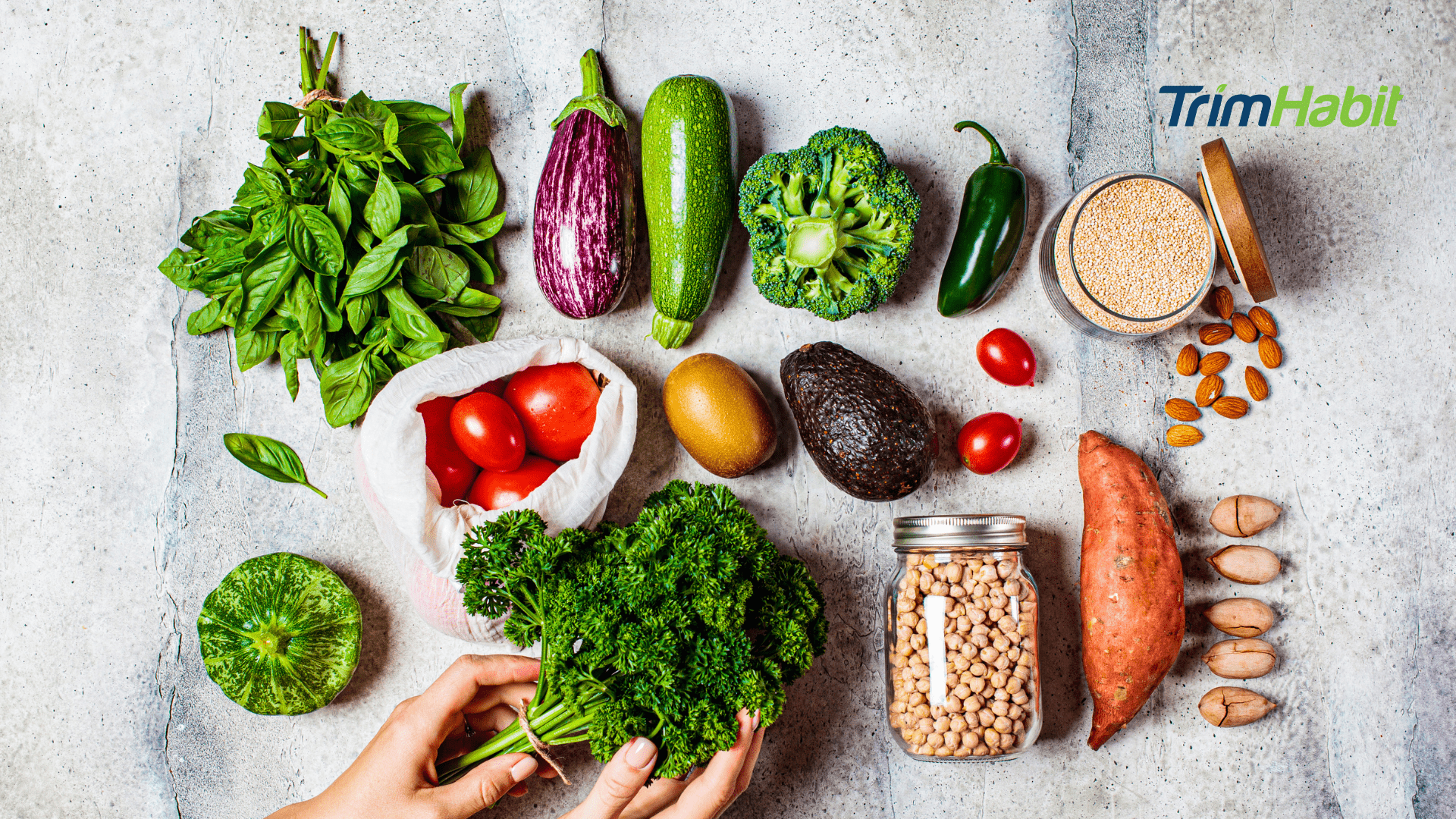Semaglutide, a medication originally developed for managing type 2 diabetes, has gained widespread attention for its effectiveness in supporting weight loss. While many people experience reduced appetite and lower food intake while on semaglutide, this can sometimes lead to a hidden concern: nutrient deficiencies. Ensuring every bite counts with nutritious foods is essential when you’re eating less overall. Healthy foods are also important as part of a semaglutide diet plan, and avoiding certain foods is crucial.
This article will guide you on how to get enough nutrients on semaglutide. This will help you feel your best and support your health goals without compromising nutrition. Following a whole-food diet and choosing nutrient-rich foods can further support the effectiveness of semaglutide, helping to maximize weight loss results and minimize side effects.
How Semaglutide Affects Eating Patterns
Semaglutide, a GLP-1 receptor agonist developed initially for type 2 diabetes and now widely used for weight management (e.g., under brand names like Ozempic and Wegovy), significantly alters eating patterns through several interconnected mechanisms. One key way semaglutide works is by causing slow digestion, which can affect food choices and nutrient absorption1.
Here’s how eating foods that support semaglutide’s effectiveness is essential for maximizing its benefits:
Reduced Appetite and Hunger Signals
Semaglutide mimics the hormone GLP-1 (glucagon-like peptide-1), which helps regulate appetite by acting on the brain’s satiety centers:
- It slows gastric emptying, making you feel fuller for longer.
- It enhances satiety by influencing the hypothalamus, reducing the drive to eat.
- Many users report a marked decrease in food cravings, particularly for high-calorie, highly palatable foods (e.g., sweets or fatty snacks).
Smaller Meal Portions
Because of prolonged satiety and reduced hunger, people on semaglutide tend to eat smaller meals less frequently, so it’s important to eat lean protein, such as skinless chicken breast.
- Spontaneous meal skipping is common, especially breakfast or snacks. The ‘half your plate’ method—filling half your plate with fruits and vegetables—can help ensure balanced nutrition and increase satiety when eating smaller meals.
- Some report early fullness after just a few bites, even of favorite foods.
Changes in Food Preferences
Semaglutide can alter food choices, often leading individuals to avoid highly processed foods :
- Decreased desire for processed or high-fat foods.
- Increased preference for lighter meals or protein-rich options.
- Some users even develop aversions to fried foods, greasy foods, and foods high in unhealthy fats, unhealthy saturated fats, and saturated fat, as well as overly sweet foods.
Fried food and battered burgers contribute to digestive discomfort and inflammation due to their high saturated fats and unhealthy fat content.
Reduced Emotional or Habitual Eating
Because semaglutide diminishes hunger and cravings, it often disrupts patterns of:
- Emotional eating (eating out of stress, boredom, etc.).
- Mindless snacking or late-night eating.
Structured Eating Patterns
Over time, semaglutide may lead to more regular, intentional eating:
- People may gravitate toward intermittent fasting-like patterns (e.g., 1-2 meals daily).
- Fewer impulsive food choices due to enhanced appetite control.
Important Caveats
- Side effects like nausea, bloating, constipation, stomach pain, and stomach cramps can influence food intake but tend to decrease over time. These symptoms may be more pronounced if the digestive system is irritated by certain foods, such as fried or fatty foods.
- Nutrient intake can suffer if appetite suppression is too strong, so it’s essential to maintain a balanced, nutrient-dense diet.
- Psychological effects (e.g., food aversion or disinterest in eating) may lead to disordered eating patterns in rare cases.
Nutrients Of Concern When Eating Less
When calorie intake is reduced, whether from appetite-suppressing medications like semaglutide, intentional dieting, or other factors, it’s essential to focus on a healthy diet, particularly aimed at controlling blood sugar levels, to avoid falling short on specific essential nutrients. Focusing on healthy foods and identifying the best foods, such as nutrient-dense, minimally processed options, can help prevent deficiencies and support optimal results, especially when following a whole diet. Below are the key ones to watch:
Protein
Why it matters: Protein helps preserve lean muscle mass, supports metabolic function, and promotes satiety.
Potential risk: Reduced appetite or fewer meals may lead to inadequate protein intake, especially if meals are carb-heavy or unbalanced.
Good sources: Eggs, poultry, fish, tofu, tempeh, Greek yogurt, cottage cheese, legumes, and quality protein powders. Incorporating lean proteins, such as lean meat and lean meats like skinless chicken, turkey, and fish, can help meet protein needs while supporting weight loss and blood sugar control.
Fiber
Why it matters: Fiber supports digestive health, helps regulate blood sugar, and contributes to feelings of fullness. Including various fruits and vegetables and complex carbohydrates is essential for providing fiber and supporting overall health.
Potential risk: Lower food volume often means less consumption of fiber-rich fruits, vegetables, whole grains, and legumes.
Good sources: Berries, oats, lentils, beans, chia seeds, flaxseeds, whole grains, leafy greens, non-starchy vegetables, and starchy vegetables.
Iron
Why it matters: Iron is essential for oxygen transport in the blood and energy levels, and is one of several important minerals needed for overall health.
Potential risk: Reduced intake of red meat, legumes, and leafy greens can result in iron deficiency, especially for menstruating individuals.
Good sources: Red meat, chicken, lentils, spinach, fortified cereals, and pumpkin seeds. Pair with vitamin C-rich foods to improve absorption.
Calcium
Why it matters: Important for bone health, nerve function, and muscle contraction.
Potential risk: Skipping dairy or dairy alternatives can result in insufficient calcium intake.
Good sources: Yogurt, milk, fortified plant milks, leafy greens, almonds, sardines with bones.
Vitamin D
Why it matters: Aids calcium absorption and supports immune health.
Potential risk: Few natural food sources; deficiencies are common even without reduced intake.
Good sources: Fatty fish (salmon, mackerel), fortified dairy or plant milks, eggs. Sun exposure and supplementation may be needed.
B Vitamins (especially B12 and Folate)
Why they matter: They support energy metabolism, red blood cell production, and brain function.
Potential risk: Inadequate intake of animal products (B12) or leafy greens (folate) due to smaller meals or restricted variety.
Good sources: B12 — meat, dairy, eggs, fortified cereals; Folate — leafy greens, legumes, citrus fruits.
Magnesium and Potassium
Why they matter: They support muscle and nerve function, hydration, and blood pressure regulation.
Potential risk: Low fruit and vegetable intake can lead to deficiencies.
Good sources: Bananas, avocados, sweet potatoes, nuts, seeds, leafy greens, whole grains.
How To Get Enough Nutrients On Semaglutide
1. Prioritize Nutrient-Dense Foods
Choose foods that pack a lot of nutrients into a few calories. Examples:
- Leafy greens (spinach, kale)
- Colorful vegetables (peppers, carrots, broccoli)
- Berries, citrus fruits
- Fatty fish (salmon, sardines)
- Eggs, beans, nuts, seeds
- Whole wheat pasta, brown rice (nutrient-dense complex carbohydrates)
2. Include High-Quality Protein at Every Meal
Protein helps preserve muscle mass and keeps you fuller longer.
Suggestions:
- Greek yogurt or cottage cheese
- Eggs or egg whites
- Poultry, fish, tofu, tempeh
- Legumes or protein shakes if needed
3. Use Healthy Fats Strategically
Fats are calorie-dense but essential for nutrient absorption and satiety.
Use in moderation:
- Avocado
- Olive oil or avocado oil
- Nuts and seeds
- Fatty fish
4. Limit “Empty Calories”
Cut back on foods and drinks that provide calories but few nutrients. Reduce:
- Sugary beverages
- Sugary foods (candy, soda, baked goods)
- Refined carbohydrates (white bread, pastries, white rice)
- Refined grains (white bread, pastries)
- Energy drinks
- Iced tea (sweetened)
- Highly processed snacks
5. Make Every Bite Count
Think of food choices as an opportunity to nourish, not just to fill up.
Tips:
- Add ground flax or chia seeds to yogurt or smoothies
- Mix greens or shredded vegetables into eggs or soups
- Use herbs and spices instead of extra salt or sauces
6. Focus on Fiber
Fiber supports digestion and overall health, especially when meals are smaller.
Add-in ideas:
- Vegetables in stir-fries, soups, and omelets
- Whole grains like quinoa, oats, and farro
- Beans, lentils, and chickpeas
7. Consider Supplementation When Needed
If food volume is too low to meet all your needs, targeted supplements may help.
- Multivitamin: Covers broad gaps
- Vitamin D & B12: Especially for limited sun or animal product intake
- Iron or calcium: If blood levels are low or the diet is lacking
8. Plan Ahead
Small meals require planning to be balanced.
Try:
- Meal prepping
- Building meals around a protein + veggie + healthy fat
- Keeping nutrient-rich snacks on hand (like boiled eggs, hummus, fruit with nut butter)
When To Consider Supplements
Here’s a clear guide on supplements, especially if you eat less due to medications like semaglutide, appetite changes, or weight loss goals.
Appetite or Food Volume Is Too Low to Meet Nutrient Needs
If you consistently eat small portions or skip meals, it may be difficult to maintain a balanced diet and get enough essential nutrients like protein, calcium, iron, or B vitamins from food alone.
Consider:
- A general multivitamin
- A protein supplement (e.g., whey, plant-based protein powder)
You Follow a Restrictive or Limited Diet
Diets that eliminate food groups (e.g., low-carb, dairy-free, plant-based) can leave nutritional gaps.
Common needs:
- Vitamin B12 (for vegans/vegetarians)
- Calcium and vitamin D (if dairy is avoided)
- Iron (if red meat is limited)
You’re Experiencing Signs of Deficiency
Symptoms like fatigue, hair thinning, brittle nails, frequent illness, or brain fog may point to low nutrient levels.
Get lab testing for:
- Vitamin D
- Iron/ferritin
- B12
- Magnesium
- Folate
You Have a Medical Condition That Increases Nutrient Needs or Impairs Absorption
Conditions like diabetes, celiac disease, bariatric surgery, or certain medications (including metformin or acid reducers) can affect how nutrients are absorbed or utilized.
May need:
- B12
- Magnesium
- Fat-soluble vitamins (A, D, E, K)
- Zinc or selenium
You’re Not Eating a Variety of Foods
If your intake lacks fruits, vegetables, whole grains, or healthy proteins (whether due to preference or nausea), supplementation can help bridge the gap.
Consider:
- A green powder or fiber supplement
- An omega-3 supplement if you don’t eat fatty fish
You’re Actively Losing Weight
Weight loss can mean reduced intake over time, especially if hunger is low. Supplementation may help preserve lean mass and prevent deficiencies.
Common add-ons:
- Protein shakes
- Electrolytes (especially if hydration is a challenge)
- Multivitamin/mineral support
Working With A Registered Dietitian
A registered dietitian is a licensed nutrition expert trained to provide evidence-based, personalized guidance. If you’re eating less, managing a medical condition, or adjusting to medications like semaglutide, an RD can help you meet your nutritional needs safely and effectively.
Key Benefits
1. Personalized Nutrition Plans
RDs tailor your meal strategy based on your health goals, food preferences, medical history, and lifestyle, which are especially important when appetite or meal size is limited.
2. Nutrient Gap Identification
Before they impact your health, they assess your current intake and help identify potential deficiencies (e.g., protein, iron, fiber, or micronutrients).
3. Meal Planning Support
Dietitians help simplify eating by offering easy, realistic meal and snack ideas that work for your calorie level, hunger cues, and schedule.
4. Supplement Guidance
Rather than guessing which supplements to take, an RD can guide appropriate use based on lab results, diet history, and your individual needs.
5. Ongoing Monitoring
Your body and appetite may change over time. RDs offer regular check-ins to adjust your plan as needed, prevent nutrient deficiencies, and support long-term success.
Red Flags: When To Seek Help
If you’re eating less or losing weight, watching for warning signs may indicate nutritional deficiencies, disordered eating patterns, or other health concerns. During your weight loss journey and weight loss efforts, be mindful of potential red flags such as unexpected weight gain, excess weight that is not responding to treatment, and spikes in blood sugar.
Monitoring for these issues is crucial to ensure your approach is effective and safe. The following symptoms should prompt conversation with a healthcare provider or registered dietitian.
Unintentional or Rapid Weight Loss
Losing more than 5–10% of your body weight in a short period (e.g., a few months) without trying may signal undernutrition or other medical issues.
Persistent Fatigue or Weakness
Being constantly low on energy despite adequate rest could reflect inadequate calorie intake, low iron, B12 deficiency, or muscle loss.
Dizziness or Fainting
These may be signs of low blood pressure, dehydration, electrolyte imbalances, or overly restrictive eating.
Hair Thinning or Hair Loss
Often linked to low protein, iron, zinc, or calorie intake. It may also reflect hormonal disruptions due to undernourishment.
Loss of Muscle Tone or Strength
Eating too little protein or calories can lead to muscle breakdown, even if weight loss isn’t extreme.
Gastrointestinal Issues
Persistent nausea, constipation, bloating, or a lack of appetite that interferes with daily eating may need medical attention, especially if related to medications like semaglutide.
Missed Periods or Hormonal Irregularities
Menstrual irregularities in women or other signs of hormonal imbalance may reflect undernourishment or energy deficiency.
Obsessive Thoughts About Food or Eating
If you’re constantly thinking about food, experiencing anxiety around meals, or avoiding eating due to guilt or control, these may be early signs of disordered eating.
Difficulty Concentrating or Brain Fog
Low carbohydrate intake, inadequate overall calories, or nutrient deficiencies (like B12, iron, and omega-3s) can impair cognitive function.
Cold Sensitivity
Even in warm environments, feeling unusually cold can indicate low calorie intake or slowed metabolism.
Who To Contact
- Registered Dietitian (RD): For personalized nutrition support, meal planning, and deficiency prevention.
- Primary Care Provider: For lab work, medication review, or overall health assessment.
- Mental Health Professional: If anxiety, body image concerns, or emotional distress drive eating habits.









